Arnaud Desbiez, a French-born conservationist, lived in the Brazilian Pantanal for years before a chance encounter changed his life – and he wasn’t even there for it. His wife, tapir conservationist Patrícia Medici, came upon a giant armadillo one night in 2009 while working in the field. Hearing the story lit a fire in Desbiez.
“This was my dream species, the holy grail of all mammals,” he says. “I said, ‘You know what? If I could just see it.’”
Weighing up to 50kg and growing up to 1.5 metres in length, the giant armadillo (Priodontes maximus) is bigger than most large dogs, with a 15cm sickle claw used to plunder rock-hard termite mounds. Yet it was one of the least understood – and least recorded – animals. With a very low demographic density and shy night-time behaviour, the giant armadillo was mostly a ghost of South America – until Desbiez set to work.
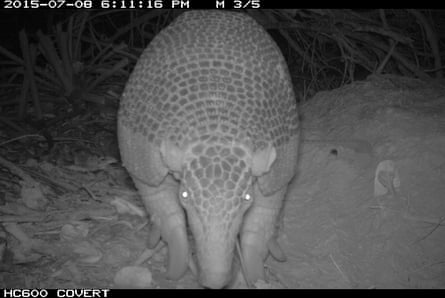
Desbiez’s first step was to install remote camera traps. “A few months later, I got my first image of a giant armadillo. That picture completely changed my life,” he says. Since then, he has been cracking the mysteries of the animal, upending previous notions about its breeding, parenting and ecological importance, and finding ways to protect the giant from extinction.
He calls this “the giant armadillo adventure”, because “what started with three guys working in the Pantanal has expanded to an NGO [the Giant Armadillo Conservation Project] with 22 people”. As well as the 350 sq km study area in the Pantanal – the largest wetlands in the world – the project has moved into two other locations in Brazil, the Cerrado, a tropical grassland, and the Atlantic Forest, a coastal rainforest. It has also established education programmes, community fire brigades within the mammal’s habitat and giant armadillo-friendly honey.
No giant armadillo has taught Desbiez more than an adult female named Isabelle. Desbiez started tracking her in 2011. Her first pup was killed by a male looking to mate with her. Her second pup, Alex, lived with Isabelle for two years until he died after being attacked by a puma.
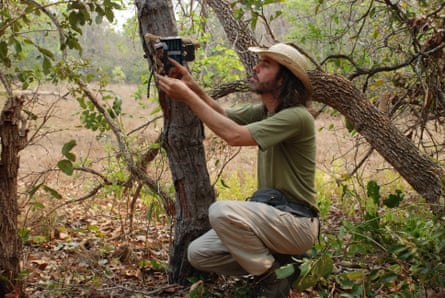
Isabelle’s behaviour helped clear up some of the misperceptions about the animals, which Desbiez says were mostly anecdotal. Researchers thought giant armadillos probably had two young with each pregnancy – Desbiez discovered they only had one. It was also thought pups spent six months with their mother, but Desbiez learned that pups don’t leave their mother’s home range until they are three or four years old.
“That’s a really long time. What does this show us? That every giant armadillo is absolutely precious, that any threat to the species – deforestation, hunting, disease, fire – has a huge impact and can cause local extinction,” says Desbiez.
Desbiez has also studied how long it takes for giant armadillos to mature and produce their own pups. The giant armadillo’s teeth lack enamel and their nails wear differently depending on the season, making it impossible to detect age using either of these methods.
So Desbiez turned to another potential measuring method: the male armadillo’s penis. “For their body size, armadillos have one of the largest penises,” Desbiez says – a mature male’s can measure 35cm. He says the species has probably evolved such a long penis because of the practicalities of coupling with a rotund, heavily armoured female.
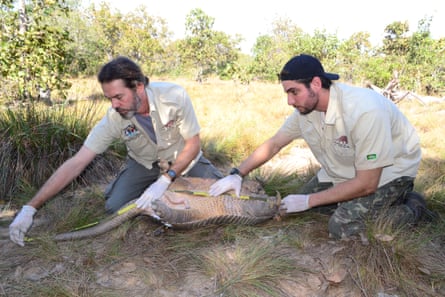
Desbiez and his team were able to determine that the giant armadillo doesn’t reach sexual maturity until seven to nine years of age. The generation time of the species is not seven years, as currently noted on the IUCN red list, but closer to 11 years, though that may be an underestimate, he says. A longer generation time means giant armadillos are more vulnerable to extinction than was thought, especially in small, local areas. For example, Desbiez says the team has discovered there is only one viable population of giant armadillos in the heavily fragmented Atlantic Forest (only about 10% of which remains).
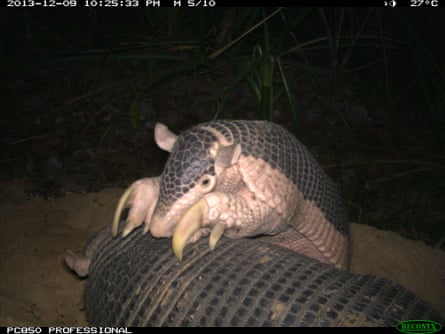
“The giant armadillo will take three to four years to produce one pup. [Whereas] in three years a nine-banded armadillo will have 12 pups, a giant armadillo will have one,” says Desbiez.
The giant armadillo was last assessed for the IUCN red list in 2013, when it was listed as vulnerable to extinction, but Desbiez’s work will help inform the next update.
In the Pantanal study area, Desbiez and his team have captured and studied 36 live giant armadillos in the past 13 years, and recorded two dozen more. But Isabelle remains one of his favourites. Given that she was producing pups in 2012, Desbiez estimates she is at least 20 years old. But she could be 30. “She is gorgeous and looks fantastic,” he says.
How long giant armadillos live in the wild is still down to estimates, though Desbiez says they are clearly slow-maturing, long-living mammals, which makes them more vulnerable to extinction threats.
The key to saving the giant armadillo is working with people, says Desbiez. “It’s really about communicating, articulating, and really … getting everybody to work together and applying all these things,” he says. “I think … there should be classes just about communication, facilitation, and these kinds of skills [for conservation students].”
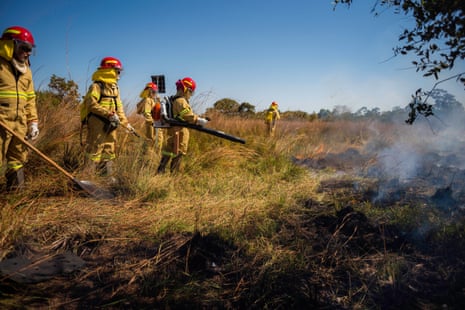
In 2019 and 2020, devastating fires whipped through the Pantanal, including the giant armadillo study site. During the 2019 fire, Desbiez remembers a local landowner on her tractor ploughing all night in an attempt to put out the flames, while her ranch hands were firefighting in sandals and shorts, armed only with branches. The following year, while watching television, Desbiez saw army fire brigades with all “this great firefighting equipment”.
“If we had this equipment, we could also combat fires,” says Desbiez. So his team went to donors and asked for help. With the funds they raised, they bought firefighting equipment and trained ranchers in how to safely combat blazes, which are expected to become more extreme with climate breakdown.
Desbiez says his team has recorded three giant armadillos killed by fire – in 2013, 2017 and 2019 – but the Giant Armadillo Conservation Project has since trained and given firefighting equipment to 15 ranchers in the Pantanal study area in the hope armadillos will not succumb in the future.
In the Cerrado – where giant armadillos survive in only a few fragments of habitat – human-wildlife conflict with the beekeeping community has also posed a threat to their existence. Giant armadillos will knock down beehives to access and prey on the larvae, which can lead to revenge killings by beekeepers.
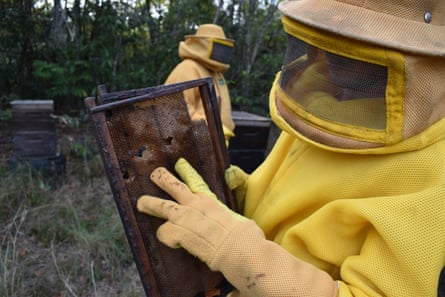
The Giant Armadillo Conservation Project works directly with beekeepers to produce giant armadillo-friendly honey. The farmers agree to not hurt or kill armadillos and in return they get help protecting their beehives, such as with electric fences. The animal-friendly label also means their honey can be sold at a premium.
Desbiez says they have certified more than 100 beekeepers to date – but that this is less of an incentive for smaller producers who usually sell informally at markets. For them, says Desbiez, the NGO will supply up to three queen bees. “We don’t give any money, but we want beekeepers to get a benefit from giant armadillo presence so that people want to coexist with them. It’s a positive thing to coexist,” he says.
In protecting armadillos, Desbiez and his team are also helping myriad other species. Giant armadillos dig out large dens, which animals such as ocelots and tortoises make use of. Other animals, including tapirs and pumas, will use the large dust and dirt mound left behind for cooling off.
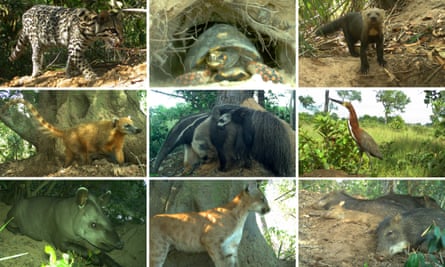
“This is a species that few people have ever seen, a species that can disappear without anybody noticing. Yet it plays a central role in the ecosystem by providing refuges to other species,” he says.
Find more age of extinction coverage here, and follow biodiversity reporters Phoebe Weston and Patrick Greenfield on Twitter for all the latest news and features







